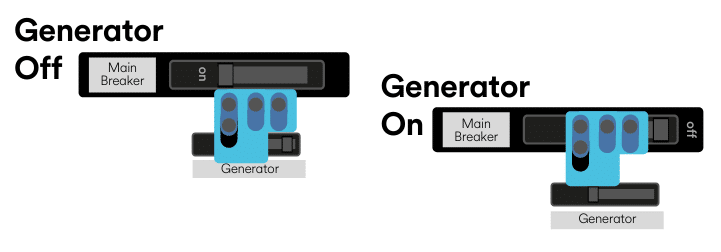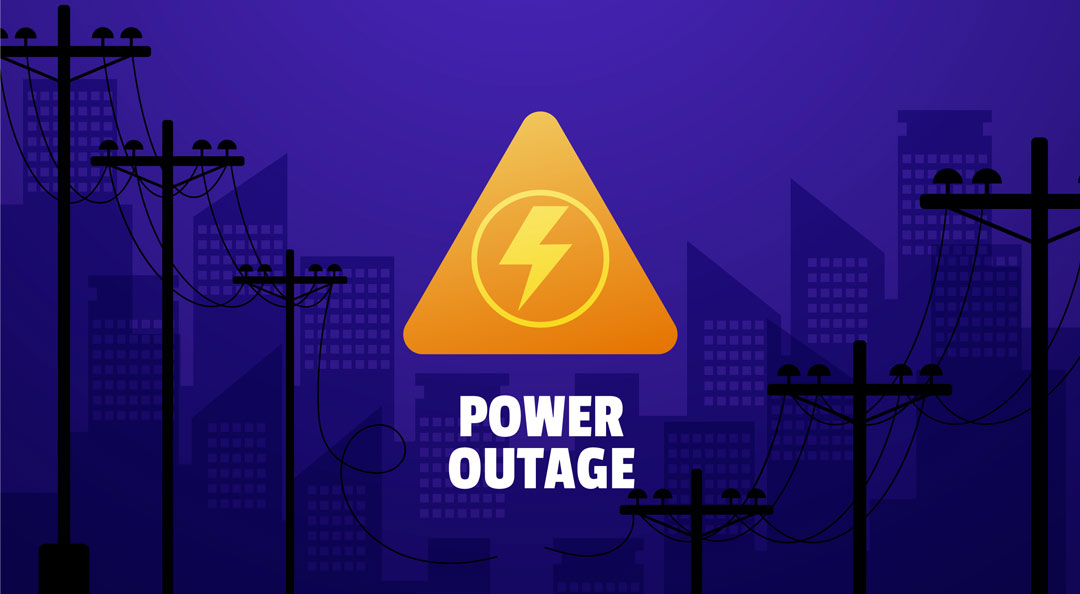What do you do when the power goes out and you have solar?
Homeowners who go solar affordably are often choosing to stick with grid-tied solar, avoiding the added cost and maintenance of a solar battery system.
But many homeowners are still confused about how solar is affected by a power outage. If you have a solar energy system powering your home that’s also grid tied, you need to understand what happens to that system when the power goes out.
Below we’ll go over the basics of what happens when the power in your local grid goes out, and what steps you might need to take when the power comes back on when you have home solar.
Grid-Tied Solar During a Power Outage
If your local power grid goes down because of an intense winter storm, or simply because someone accidentally trimmed a tree branch onto the lines, that means your solar will shut off too.
In order to make sure that homes with solar don’t send electricity back onto the grid while the lines are being worked on, this is a requirement for grid tied solar. That way, none of the lineman working to get the grid back up and running are at risk for getting a shock from a solar energy system discharging onto the lines.
The great news is, because the system is designed with this in mind, when the power goes out your solar will automatically shut off as well.
From the breakers to the microinverters, your solar energy system is set up to know when the local power grid is up and running. When it’s not, they’ll turn off immediately to protect your system and home from any damage related to an electrical grid disruption.
What About When the Power Comes Back On?
Most of the time, once the power comes back on you won’t need to do anything. However, if you want to be extra cautious you can do the following:
- Go check your solar breaker box.
- If any of the breakers for your solar system have been tripped, turn them all the way off, and then back on.
- Wait about 15 minutes and check your monitoring app to make sure your system has turned back on and is connected to monitoring correctly. If it’s not daytime, you will need to wait until morning to verify this.
Ultimately, having grid-tied solar powering your home is pretty simple. After all, that’s the point: to give you an option for simple, affordable, clean solar energy at home.
Power Outages and Solar Connected to a Generator
Some homeowners who live in more rural areas might choose to take on the extra investment of having a solar energy system designed with what’s called a generator switch.
That switch allows the home’s electrical system to transition to a generator for power if the electrical grid goes down. It also means homeowners have a few other steps to take when that happens.
All homes with a generator switch also have something called an interlock. That’s a piece that fits on your breaker box and only allows you to switch to generator power when the main breaker is in the off position.
Again, that’s to protect anyone working on the electrical lines in your area’s power grid. You don’t want the generator sending power back onto the lines while they’re being worked on.
In order to turn on the generator when the power is out, you’ll need to go to your breaker box, make sure the main breaker is off, and flip the whole interlock system into the position for the generator.
But don’t do that just yet!
Before turning on your generator, you’ll likely want to consider turning off any appliances in your home that usually pull a lot of power. Things like your washer, dryer, or an electric furnace (depending on the weather of course) should be turned off at the breaker to avoid wasting your generator’s power on these non-essentials.
Once you’ve turned off those major appliances to avoid load shedding, go ahead and flip the interlock system and switch from grid power to generator power. See the example below for how an interlock looks when a generator is off and on.

What About When the Power Comes Back On?
With a generator, once the power comes back on you’ll do everything you did to transition to generator power in reverse.
After you’ve turned the generator off, go to your breaker box, switch back on any major appliance breakers you switched off to conserve power.
Then flip back on the interlock system so that your home is only pulling energy from the power grid.
Safe Solar with Purelight
Regardless of whether you go fully grid tied, or decide you want to invest in a generator and generator switch as well, you can feel good about having solar with Purelight Power.
Every system from Purelight is designed and installed by solar professionals.
So your home is protected from power surges or other damage that could happen during a power outage of your local grid.





